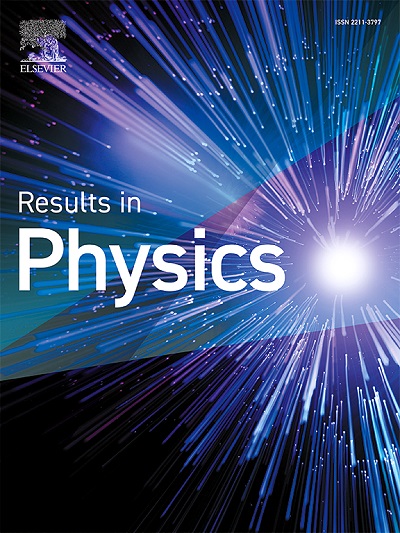Enhancing methylene blue degradation via Mn, Co, and Al doped organic-ligand-stabilized ZnO nanoparticles: Experimental and DFT insights
IF 4.4
2区 物理与天体物理
Q2 MATERIALS SCIENCE, MULTIDISCIPLINARY
引用次数: 0
Abstract
Organic dyes contaminate a huge amount of water annually, resulting in potential risks for aquatic ecosystems. The removal of such contamination is addressed in this study by synthesizing highly stabilized manganese (Mn), cobalt (Co), and aluminum (Al)-doped zinc oxide (ZnO) ultra-small (US) nanoparticles (NPs) via the sol–gel approach and characterized through various characterization techniques. XRD confirmed single-phase crystallization in all samples, with crystallite/nanoparticle sizes ranging from 3 nm to 10 nm. A broad absorbance peak in the UV–Vis spectra signified size distribution, with the bandgap ranging from 3.02 to 3.06 eV for ZnO and reduced to 2.98 eV upon Co-doping. Density Functional Theory (DFT) calculations revealed improved structural and mechanical stability upon Co-doping and citrate (cit) capping. Furthermore, Co-doping and cit-capping improved the chemical reactivity of ZnO NPs. The cit-decorated 3 % Mn-doped ZnO photocatalyst improved the degradation efficiency from 27.02 mg/g to 29.63 mg/g. The 5 % Co-doped ZnO photocatalyst (cit-capped) exhibited 8.50 % higher dye degradation compared to ZnO-cit. Among dmlt-capped photocatalysts (ZnO), 5 % Al-doped remain an excellent photocatalyst and degrade 95.49 % dye in 180 min. DFT study revealed that cit-capping and Co-doping improve the light absorption of the photocatalysts, with an onset shift from 0.75 eV (ZnO) to 0.10 eV (ZnO cit). Co-incorporation into the ZnO lattice introduces an additional absorption peak in the visible range. Moreover, cit-capping also broadens the absorption range. Degradation kinetics of MB dye follow pseudo-first-order kinetics with R-squared values ranging from 0.90 to 0.99. Further improvements are possible through optimization of dopant levels (%), dye concentration, pH, and temperature.
求助全文
约1分钟内获得全文
求助全文
来源期刊

Results in Physics
MATERIALS SCIENCE, MULTIDISCIPLINARYPHYSIC-PHYSICS, MULTIDISCIPLINARY
CiteScore
8.70
自引率
9.40%
发文量
754
审稿时长
50 days
期刊介绍:
Results in Physics is an open access journal offering authors the opportunity to publish in all fundamental and interdisciplinary areas of physics, materials science, and applied physics. Papers of a theoretical, computational, and experimental nature are all welcome. Results in Physics accepts papers that are scientifically sound, technically correct and provide valuable new knowledge to the physics community. Topics such as three-dimensional flow and magnetohydrodynamics are not within the scope of Results in Physics.
Results in Physics welcomes three types of papers:
1. Full research papers
2. Microarticles: very short papers, no longer than two pages. They may consist of a single, but well-described piece of information, such as:
- Data and/or a plot plus a description
- Description of a new method or instrumentation
- Negative results
- Concept or design study
3. Letters to the Editor: Letters discussing a recent article published in Results in Physics are welcome. These are objective, constructive, or educational critiques of papers published in Results in Physics. Accepted letters will be sent to the author of the original paper for a response. Each letter and response is published together. Letters should be received within 8 weeks of the article''s publication. They should not exceed 750 words of text and 10 references.
 求助内容:
求助内容: 应助结果提醒方式:
应助结果提醒方式:


